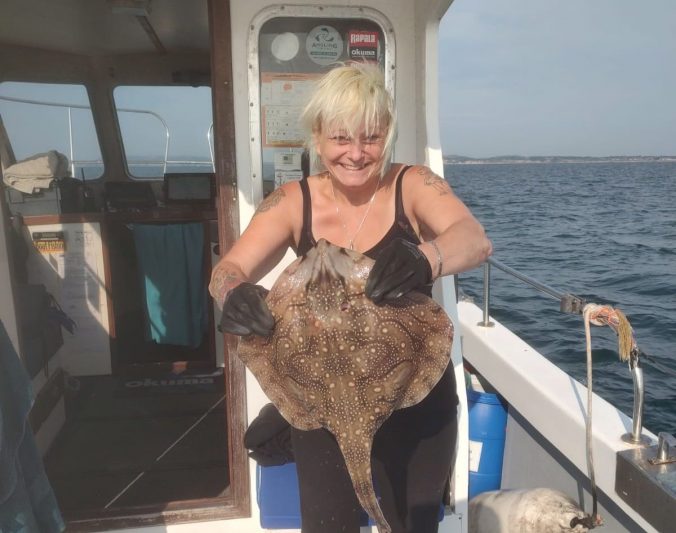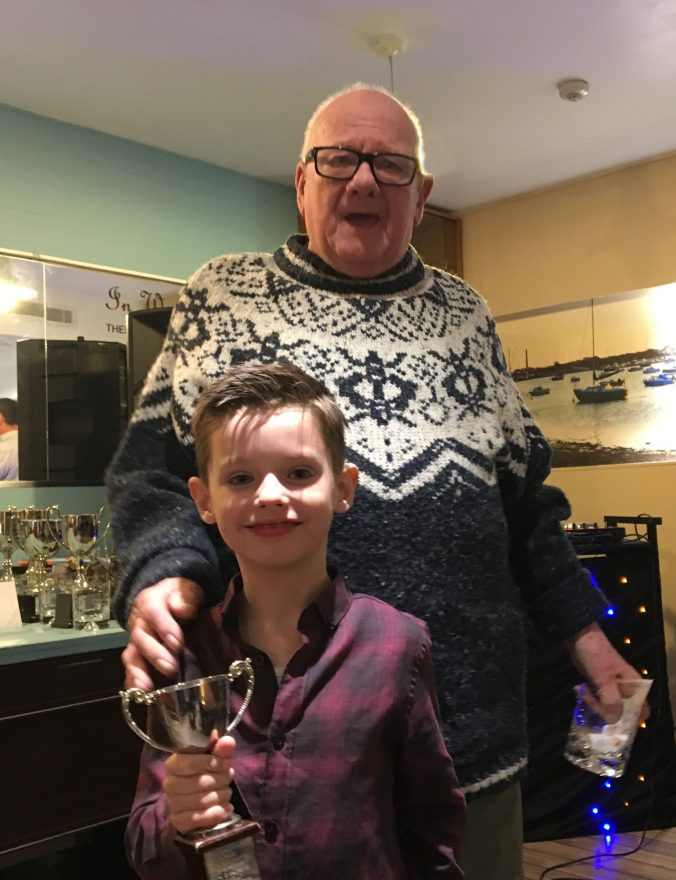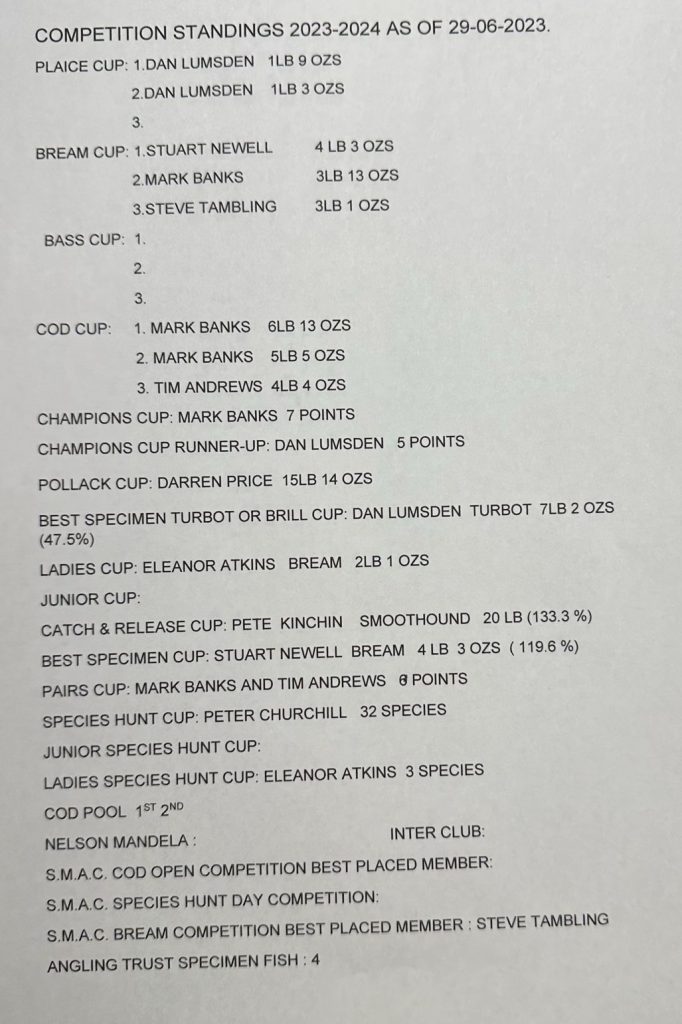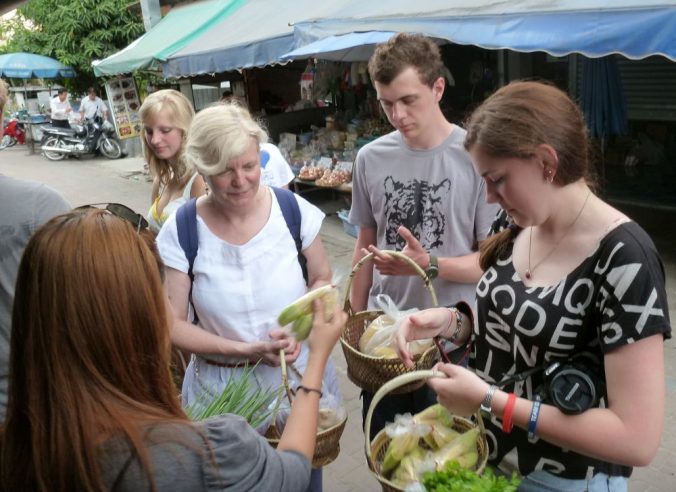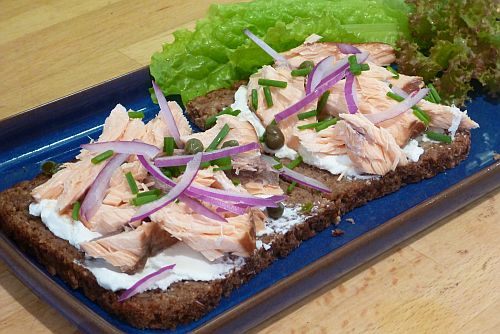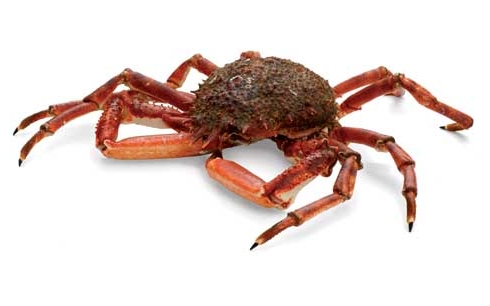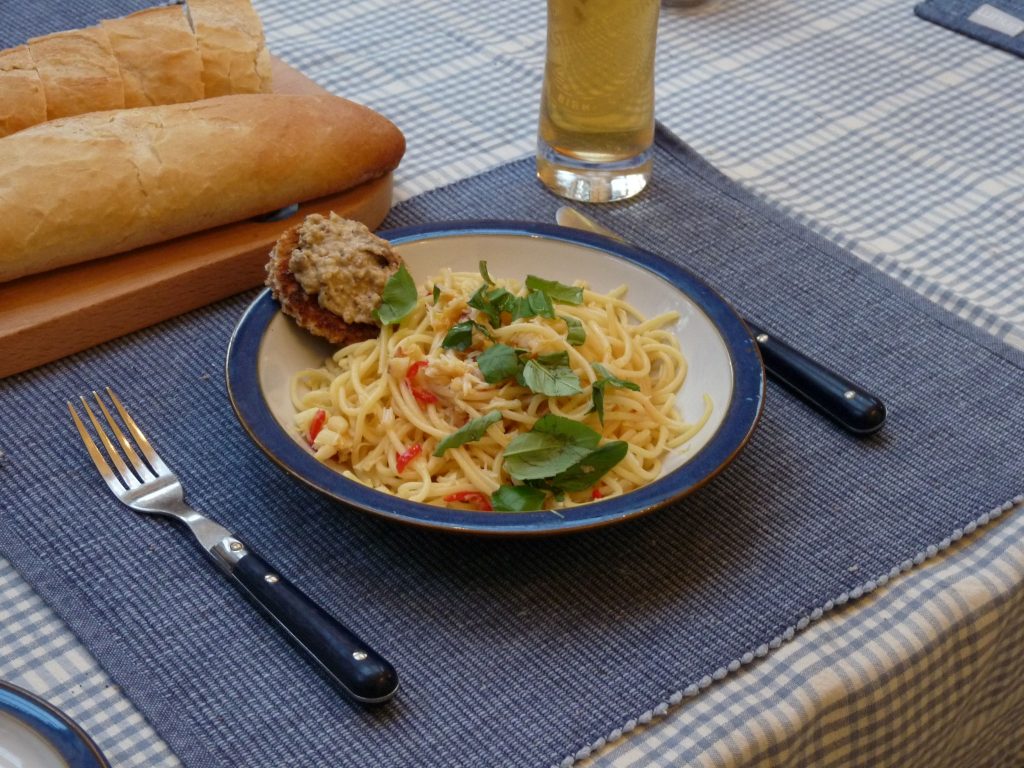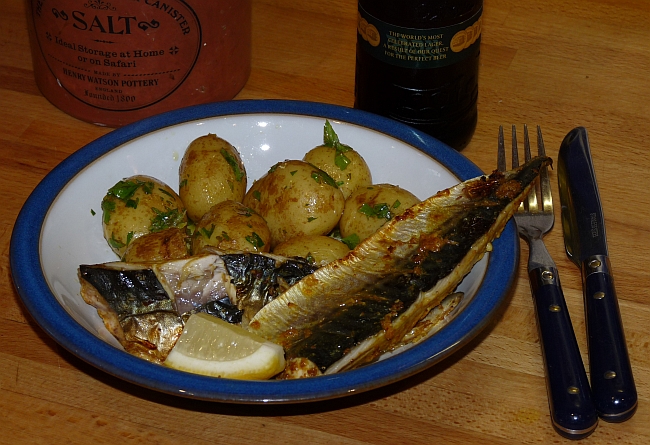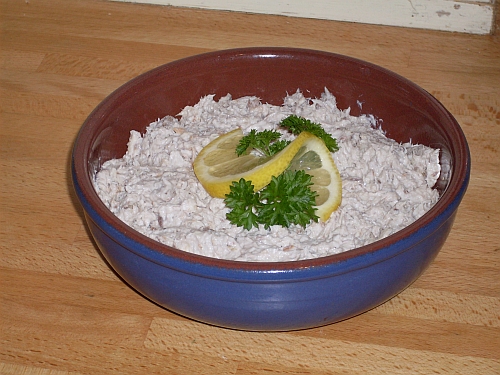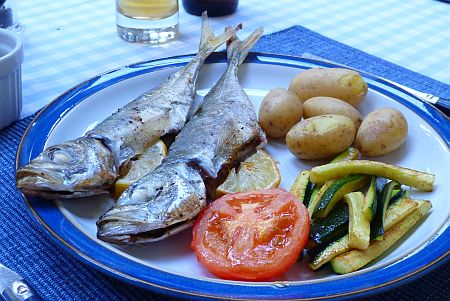It is quite extrordinary what turns up sometimes. Our friend and SMAC member Bill Arnold showed me before he passed away in November a typewritten account of the voyage made by one of his relatives in 1948. It was in a small sailing yacht with a tempermental engine, and they set off with very little experience between them to sail from Alloa in Scotland to Southampton. The boat’s name, “Alanna” means a term of endearment such as “Sweetie” in Gaelic and Irish. They relied on paper charts and compass alone, with no radio and few creature comforts on board. Here is a transcript – you can download a facsimile here. The map below shows the stops on the journey between their departure from Alloa on 9th June and their arrival at Southampton Town Quay on 28th June 1948. We haven’t yet worked out who actually wrote the Log, but enjoy the read!
THE MAIDEN VOYAGE OF THE ALANNA
From Alloa to Southampton.
The Crew: Skipper – The Hon. Somerset Butler. (Experience – No sailing for 20 years).
Engineer – Bill Arnold, Landlord of the Leopard Inn, Purbrook. (Experience Nil).
Deck hand, Owner and Editor of the Log – Myself. Experience – Nil.
9th June 1948. We left Alloa at 3 p.m. bound for Grangemouth. We had a long argument with a local expert who was acting as pilot as to whether we could get under the swing bridge at Kincardine. Eventually we decided that we could not so the bridge was opened – but we received a raspberry from its operator. At 5 p.m. we went into the mud, owing to the ‘expert’ navigation of our pilot. We were high and dry, and over at an alarming angle until 5 a.m. when we floated but shipped a considerable quantity of water.
10th June. By 5.30 a.m. we were on the mud again. We floated off at 5 p.m. – a very dicey manoeuvre but we managed it O.K. due to the expert help of Andrew Paisley, the pilot. At 6 p.m. we tied up in the Basin, and remained there too darned long owing to the good beer and pleasant company.
13th June. We had a trial trip down to Aberdour to test the reverse gear and the sails, the crew consisting of Butler, Arnold, Self, Paisley, Johnny Dixon, Ray Fuller, Roy Something and Girl Friend. Johnny has primus trouble, but otherwise everything was O.K., apart from an overburden of rope – sorry, sheets.
14th June. We left Grangemouth at 10.00 hours bound for Eynemouth. All went well except for a little fog in the Forth and filth in the fuel tank. We saw numerous porpoises. We docked in Eynemouth at 9.45 p.m., just in time for a pint. The Harbour Master was a very good type. We entertained him on board, and he gave us some excellent fresh herrings and one mackerel for breakfast.
l5th June. We left Eynemouth bound for Walkworth Harbour. We had a decent wind to begin with but it fell off so we had to rely on the engine. All well apart from more dirt in the fuel tank. At 8.30 p.m. we tied up in Walkworth, where we found quite a good pub and bought two lobsters.
16th June. We left Walkworth at 9.45 a.m. bound for Sunderland. There was a fairly heavy sea and we all got very wet. We had some trouble with the bilge pump. We made a nasty mess of tying up at Sunderland at 2 p.m., and anyway Sunderland was a horrible dump – all coal dust and weak beer, and the pubs – did not open till 7 p.m.!
17th June. We left Sunderland at 0745 hours bound for Scarborough, but made a mistake over the chart. We put in at Staith, but we received sinister warnings from a local type about our probable inability to get out of the harbour again in the event of a heavy swell, and were advised to press on to Whitby. We therefore pressed on and docked at 4 p.m. Whitby was a good spot, but we had difficulty over obtaining paraffin. We had to row it over in a dinghy, in imminent danger of sinking. However Whitby supplied good and plentiful fish and chips, and we had good beer and a wash at the Jolly Sailor.
18th June. We left Whitby at 11.00 hours bound for Bridlington. We saw dozens of sea birds, including Puffin, off Flamboro’ Head. We ran into an awful thunderstorm and got very wet, but there was a vivid display of lightning and very fine cumulus clouds. A violent explosion on the north side of Flamboro’ Head covered Bill and myself with dust and dirt, but the skipper slept through it all and never heard a thing! In spite of a heavy swell on the south side of the Head, we got into Bridlington Harbour at 18.00 hours, and berthed alongside a Danish fishing boat. We had an awful panic over the paraffin, but owing to the excellent hospitality of the Royal Yorkshire Yacht Club we decided to stay over Saturday. ·
Oh, yes, one thing·more.- Rather an amusing incident occurred just after we docked. I was shambling down the quay, scruffy and weary after making a circular tour of the town on foot in a fruitless quest for paraffin, when one of the borough’s younger denizens, a small youth, approached and enquired of me as to what time I was bringing my fish in the morning!!
19th June. At 3.30 a.m. I was nearly blasted out of my bunk by the Danish skipper commencing his vast single potted 75 h.p. diesel, but thankfully remembered that we, on the contrary, were due at last for a “lie in” until at least 9.30 a.m. At 10 a.m. we rose and had a cup of char (a “Hayling Island” Breakfast, or, as Bill so aptly puts it, “a woodbine and a swing on the gate”). We went to the Yacht Club and a bath, the first for nearly three weeks, so I leave to your imagination the subsequent state of the bath! I then went for a further search for paraffin, this time not so fruitless – in fact I netted 15 gallons of the stuff. Had lunch – fish and chips again!
We had to shift berth in order to get water on board, ably assisted by a curious youth who spoke fluent Danish and yet turned out to be a native of Brid. We went ashore and had drinks at the Club, and collected some larger scale charts. We had a good dinner of chicken at Tindalls Restaurant (Wot, no fish and chips!), thence to the Club again for more drinks till 10 p.m., when we returned to the boat only to find that the damned thing had leant the wrong way and was seated on the dinghy. I am therefore writing this log at an angle of 45 degrees, anxiously awaiting the tide.
20th June. The dinghy floated, thank the Lord, at 11.30 p.m., and we assumed a more upright attitude at around midnight. I don’t know if anyone has ever tried sleeping next to a Kelvin engine while at an angle of 45 degrees, but I can hardly recommend it, except possibly as a cure for sleep walking, for having once stubbed your big toe smartly on the flywheel you will not come back for a return dose.
We left Bridlington at 5 a.m. bound for Grimsby. There was a very heavy swell in the Bay, which made the breakfast organisation anything but organised. Eventually, after abortive attempts to cook something, and having nearly set the whole shooting match alight when the primus hurled itself away after an exceptionally violent roll, we abandoned the idea. The said swell got rather worse when a Nor’ easter sprang up, and this completely disorganised the sanitary side of affairs, it being difficult enough to seat oneself comfortably on the throne even when the boat is on an even keel unless ono is an expert in the art of acrobatics.
At 1 p.m. Bill concocted a weird and wonderful stew from about all of Messrs. Heinz’s 57 Varieties, and was on the point of executing the coup de grace, when primus, saucepan and stew vanished into the bilge and we had to be content with bread and cheese; a most inglorious end to what might have been a most excellent lunch. Still, no real worry, though I found it rather a wrench to see our lunch being pumped into the drink via the very hard worked bilge pump.
Whilst negotiating the mouth of the Humber, the crosstrees decided that they had had enough and departed over the stern, leaving the boom to do its stuff as a remarkably efficient basher of heads, crew, for the use of. Eventually, in spite of everything, we docked and met a very nice chap by the name of Captain Morton, the Dock Master and Commodore of the local Yacht Club, who kindly supplied us with 10 gallons of paraffin.
The Skipper had a slight go of malaria, so stayed on board while Bill and I went in search of food. We found a small cafe open, and scrounged a pint of milk and ate some toasted tea cakes. We watched a large ship go through the lock into the Basin with considerably less panic than we had! We decided to try to make Great Yarmouth in one hop on the morrow (what a hope!) so retired early in order to rise refreshed at 5 a.m.
21st June. A DAY TO REMEMBER!!! We left Grimsby at 6 a.m. bound for Yarmouth (wishful thinking). We hoisted mainsail and jib in order to assist our ever-willing Kelvin in this epic dice. We set course from the Bull Lightship at 7 a.m. (approx.), full speed ahead and with a fresh south-westerly wind.
First Catastrophe: The engine was stopped in order to hear the weather forecast on the radio, and was then restarted when the wiper upper cloth, which was perilously suspended on top of the silencer to dry, did a graceful swallow dive straight into the timing gear and mag. chain. The engine made an expensive noise and ceased abruptly, the wiper upper was found to be much mangled and the mag, chain broken, which caused much despondency and profanity, as we had no spare chain. However, we transferred the starter chain on to the magneto, and the remnants of the mag. chain on to the starter, patched up with wire and ingenuity, ably assisted by the Skipper’s nail file. At last we managed to restart the engine, though it objected to having to work at an angle of 45 degrees, and by this time the wind was strong and the sails really doing their stuff. Still we somehow managed to keep the engine going, not daring to let it stop lest we should be unable ever to start it again.
By now the sea was very rough and I was very frightened. We were well out of sight of land, and shipped large quantities of water and, as the bilge pump had packed up, Bill and I had to bale furiously with saucepan and bucket, just managing to hold our own. The bedding was soaked, the Skipper was soaked, Bill was soaked, and I was soaked, feeling sick and a bloody sight more than just very frightened.
Second Catastrophe: The yardarm halyards carried away. Somehow we managed to lower the mainsail, but had ghastly trouble with the crosstrees. Eventually I got them fairly securely lashed, with one eye on the life jacket locker and the other one peering around for land and other shipping. We saw one ship miles away (wot, no distress signals!),but no terra firma.. We decided to head due west to try and make land, definitely giving up all idea of Yarmouth. Thank God, the engine was running better in spite of liberal douchings of sea water, but we were still baling like hell, and, the ship suddenly rolling, I spilt a bucket of bilge all over my bunk! At last we sighted land, and a general feeling of relief was apparent, I myself feeling slightly less sick, and thinking slightly less about how I might perform in a heavy sea clad in a life belt. A long discussion ensued as to where we might be – some saying Denmark, some saying Skegness. We decided that it might easily be Skegness, so, with the aid of the plum-bob or whatever one calls the thing, we got close into the shore, got caught in a violent thunderstorm, and got wetter than ever. I was pressed into the dinghy to row ashore and find out where the hell we were. I was very antipathic about the breakers and very nearly got turned over by one, so leaped into the surf and waded ashore waist deep, dragging the dinghy, and causing good entertainment for my admiring audience by now assembled on the beach to welcome the shipwrecked mariner. I interviewed the Head Man of the Village, and found that we were at Sutton-on-Sea. I had a chat with the coastguard on the blower and was advised to proceed to Skegness and anchor off the pier. I returned to the beach and, to the accompaniment of cheers from my admiring audience, launched myself, cum dinghy, into the surf, subsequently catching numerous crabs and causing much merriment on the beach.
At last I reached “Alanna”, tired, terse and determined to get out of shipping! We got to Skegness at 8.15 p.m., lowered anchor, shut up ship and proceeded ashore in a local pleasure boat. We were there interviewed by a news hound and then saw the coastguard who led us to a hotel. The manager seemed dubious about our weather-beaten appearance at first, but we softened his heart and got fixed up. The hotel was full of “Eee, ba gums” – and nothing under sixty – but we were treated very cordially by our Landlord who even lent me his nail scissors and dressing gown. (One interesting fact we learnt was that the coastguards had been watching our antics all down the coast after our predicament had been radioed by a fishing boat).
22nd June. I searched for paraffin, and eventually got hold of 20 gallons from a garage specialising in tractors, but I had to carry it down to the beach which was much too much like hard work for yours truly. Bill and the Skipper observed my struggles from the boat with great amusement, but I found them both with very long faces, for Bill had been round the boat and found that she had not fared too well after her previous day’s display of aquabatics. We very nearly decided to abandon the ship and press on home via British Railways, but thought we would first try to fix the engine ? ? pump which we believed to be responsible for the bulk of the bilge. We fixed the pump during the afternoon and cleared up the evidences of the previous day’s chaos, and agreed after all to press on to Lowestoft the next day if she had not made too much water during the night. With this in view, we returned to the hotel, dined and went early to bed.
23rd June. We rowed out to the boat, to find that she had only made a small amount of water, so decided to force on regardless. We left Skegness at 10.10 a.m. bound for Lowestoft, and had an excellent trip, making very good time once the tide was under us. We made landfall at Hunstanton Point and rock-hopped down the Norfolk coast, reaching Sheringham at 6.15 p.m. and Cromer at 6.45 (distance 3½ miles, speed approx. 7 Knots).
Just after lighting up navigation lamps, the engine conked out, due to more dirt in petrol and paraffin tanks, but we got it clear and restarted after much furious winding. By this time it was fairly dark, and we felt a little foxed by the large number of lights flashing at us. However, after a few gins the lights sorted themselves out and we crept into Lowestoft Harbour at 12.30 a.m. after a very good day. We got shepherded into a good berth by two chums in a rowing boat, and then got said chums on board and gave them a drink in order to acquire a little local knowledge. Everything sounded easy, so we turned in at 1 a.m. completely satisfied with our life on the ocean wave.
24th June. I was dragged out of bed (bunk) by the Skipper at around 7 a.m., for he was all anxious to get under way and to commence a little crew organisation. A character then appeared alongside, in a rowing boat, who turned out to be something to do with the Yacht Club, and all anxious to assist in any way possible in speeding us on our way south. He fixed us up with two gallons of petrol and eventually, after a spot of bother over permits, or something equally typical, with 40 gallons of T.V.O. and 11 gallons of water.
At 10.10 a.m. we got under way, bound for Ramsgate via Orford Ness, N. Shipwash Buoy, Kentish Knock and North Foreland light – a good haul for the likes of we – but we felt that as we had hit nothing during the previous night’s sortie we might as well have another bash at nocturnal navigation.
Bill cooked us an excellent breakfast of grilled mackerel at 11 a.m. Our progress was very slow as we were stemming the tide and the wind gave very little help, but we eventually reached Orford Ness light at 6 p.m. and set course for N. Shipwash which we picked up with no difficulty as it was about dead in line with the S. Shipwash lightship. We set course for the Kentish Knock at around 7 p.m. There was little to report; a calm sea, thank goodness, a very light Wind and the tide was now under us. A destroyer passed astern at 9,30 p.m., and we envied them their speed and their warm wheelhouse as by now it was rather cold. We had no idea where we were, but trusted in the compass, and at 11 p.m. – our E.T.A. at the Kentish Knock – there was no sign of it, only dozens of other lights which we were unable to identify. At last we saw one giving 3 red flashes every 15 seconds and, after a furious consultation of the chart, decided that That was It, on our starboard hand, so we headed due west for what seemed like hours until it loomed up, black and sinister, in front of us. Three red flashes and three moans every 15 seconds, a most melancholy sound.
We set course for North Foreland light at 11.30 p.m., and wonderful to relate, had no difficulty in picking it up, with its five flashes every 20 seconds. After that I had a short sleep below, along with the Kelvin engine, which was plugging manfully along as ever, but making the cabin very hot and smelly.
At 1 a.m. I went back to the helm to relieve the Skipper. The light still seemed a long way off and there were scores of others to port of the one which we had decided – and sincerely hoped – must be the dreaded Goodwins. We finally reached the North Foreland light at 2.30 a.m. and from there I could just make out the shore so we crept down it to Ramsgate which was easily identifiable by a large red light – I should think probably appropriate.
On reaching Ramsgate Harbour I decided to press on as we had bags of fuel and it seemed a pity to waste the daylight hours, I nearly put the boat in the mud by making a mistake over the course, but asked the way to Dover of two fishermen, and got on to the right track after much argument with the compass. Deal duly loomed up out of the mist, so I knew that our course should be O.K., but we nearly ran down a wreck sticking up out of the sea.
When Dover loomed up I was still at the helm, fervently hoping that the Skipper would remain below with his dreams and gin, until we were past the Harbour mouth, this being the last possible port of call until Newhaven. I was determined to make Newhaven that day. Bill and the Skipper came creeping out just as we were safely past and admired the famous white cliffs. Personally, I just couldn’t care less, but felt a little less fragile after a wash and breakfast.
The sea was very calm, and considerably cleaner looking than the northern variety. The gulls were feeding well so we let out our troll lines, ever hopeful of a dish of fresh mackerel, but as usual, no luck. I went below to put in a few much needed zizzing hours, having peered around beforehand and observed the Dungeness light well ahead, we being then abreast of Dymchurch.
I slept till noon when I returned to the deck and Bill informed me that we were abreast of Hastings. A little rapid calculation showed that our speed must have been 20 knots! Obviously something was very, very wrong. A closer look at the shore confirmed our suspicions that the hamlet at which we were gazing was certainly not Hastings, the latter being, in fact, at least 15 miles further on, so our elation was short lived. The wind was now dead ahead so the jib was useless and we hauled it down. The scenery was very different from that of the north and was, with a few exceptions, rather lacking in character. Our progress was rather slow, even though the tide was right under us, but eventually we sighted Hastings at about 3 p.m. There were dozens of people on the sea front, and several hardy characters tossing about in little boats, angling hopefully, one boatload of whom we nearly ran down.
From Bexhill we set course for Beachy Head, with the tide agin us, wind agin us and, for once in his sweet life, our Kelvin agin us – not that he conked out or anything as unseemly as that, no Kelvin would dream of doing that – but he just seemed to be a little off colour and, dammit, one could hardly blame him after nearly thirty hours continuous work. We reached Beachy Head at 7 p.m. after three hours battling against just about everything.
Unhappily, just as we passed the lighthouse, Alanna gave one of her special heaves and our teapot went flying, hit the engine, and of course broke into many pieces. Only that morning we had remarked on how amazing it was that we still had our china tea-pot intact. However, not to be defeated, Bill made up a brew in the kettle, I then primed the bilge pump with the said kettle and choked the thing up with tea leaves. Tut, tut. The cup of Rosy was worth it though.
We passed the Seven Sisters, and I had nostalgic memories of the shrimping parties that we used to have there when I was at school at Seaford, some years ago now.
At last we sighted the well-known Mole and lighthouse marking the west side of the harbour entrance at Newhaven. The Skipper related a lurid story of how a chum of his had run aground near there and lost his boat, but in spite of this timely anecdote we entered the harbour at 9 p.m. and berthed alongside Baron d’Erlanger’s luxury cruiser (which is veritably a home from home, with every modern convenience and two beautifully maintained Gleniffer 75 h.p. paraffin engines, obviously the pride and joy of her bearded engineer). Bill and I went ashore and took the local water which proved good and plentiful – so much so that I had quite a dice descending the ladder in order to get aboard.
I went to bed at 11 p.m. feeling that our last hop (Lowestoft to Newhaven in 34½ hours) had been altogether satisfactory and said much for the boat and engine.
26th June. I arose at 7.30 a.m. and went ashore to try to get a pint of milk, which was refused me on the grounds that we were not registered in this locality. We were indeed in the south again! However, I managed to get 30 gallons of vaporising oil froth a local boat builder, which I was extremely nervous of spilling over the Baron’s beautifully scrubbed decks, which were in violent contrast to our own fabric patched and grease besmeared efforts, but I coped without spilling a drop though more by luck than judgement.
At 10 a.m. we got cracking bound for Hayling Island, unfortunately having to battle once more against a strong head wind. It was so misty that we were quite unable to see the coast and fervently hoped that we would not “feel” it!
The mist cleared at about 11.30 and we saw Brighton’s Palace Pier on our starboard bow, so we were getting on – albeit rather slowly – at about 4 knots.
We passed various toughs fishing from very small rowing boats which were veritably bobbing about like corks, so, after lunching off the remains of our Lowestoft grey mullet, we tried fishing with a mullet head instead of the spinner which had not given a very good account of itself on the way down, having caught us precisely nothing. Needless to say, the fish head caught us nothing either!
We tried a bit of tacking in an effort to increase our speed and were fairly successful but the sea was rather rough further out and so we again got very wet. There was a remarkable weather clamp off Worthing; it only lasted for about five minutes but during that time we just could not see a damned thing. It reminded me very much of the scotch mist which we had experienced up north. We kept on tacking until we reached Bogner Regis, where we observed on our chart that there were some prominent rocks about. Could we see them? Could we hell! We passed quite close to a local fishing boat whose owner waved us further out and shouted something – presumably about the rocks – but we -did not hang about to find out what, but pointed our bowsprit at Selsey Bill and kept well out. The chart was covered with sinister warnings about “numerous obstructions to navigation” and we only hoped that we would not become a further obstruction!
All went well until we reached the Beacon off the tip of Selsey Bill and then we had rather an unpleasant shock for a large rock was observed just below the surface to starboard of the Beacon. We put the helm hard over and headed further out but as we turned there was a grinding noise and a bump. Phew! But we got off all right and did not appear to have damaged anything – anyway the water did not seem to be coming in any faster than usual, although by the time we had picked up the two buoys that marked the entrance to the channel leading to Chichester Harbour it was really rather rough and I’m damned if we didn’t have to start the baling business again with the bucket and saucepan, our friend the Bilge pump having packed up once more. We had another nasty moment crossing the Bar at Chichester, when wo went too close to the wreck and very nearly finished up in the same unhappy predicament ourselves, bumping our backside good and hearty on the sandbank, but once again Providence was on our side and we got off.
We dropped anchor off Hayling Yacht Club at 10.30 p.m. and rowed ashore in the dinghy, which leaked alarmingly due to its not having been in the water since my memorable party piece at Sutton. Bill’s car picked us up and conveyed us to Purbrook and his excellent pub, the Leopard Inn, where we consumed numerous drinks until the early hours, regaling his Missus with the more lurid details of the trip.
28th June. I spent a couple of very pleasant and comfortable days with the Skipper, and then we left for Southampton, our final destination. Before we left Hayling we discovered that we had nearly lost our boat during the previous night’s storm. She had dragged her anchor or something silly and nearly went on the beach!
We had a pleasant voyage to Southampton entirely devoid of incident, which was pretty remarkable for us, the trip taking about four hours which was good going, and we tied up at the Town Quay just after 2 p.m. Our Journey’s End… Regretfully I bade farewell to the Skipper and Bill, who left by British Railways.
Altogether it was a good trip and loads of fun, but I think it was made much more pleasant by the splendid help and co-operation of the dozens of sea-faring folk whom we had the privilege to meet all down the coast. If there were more Andrew Paisleys and Jock Hutchinsons about this old country really would be a place fit for heroes to live in.
**************

